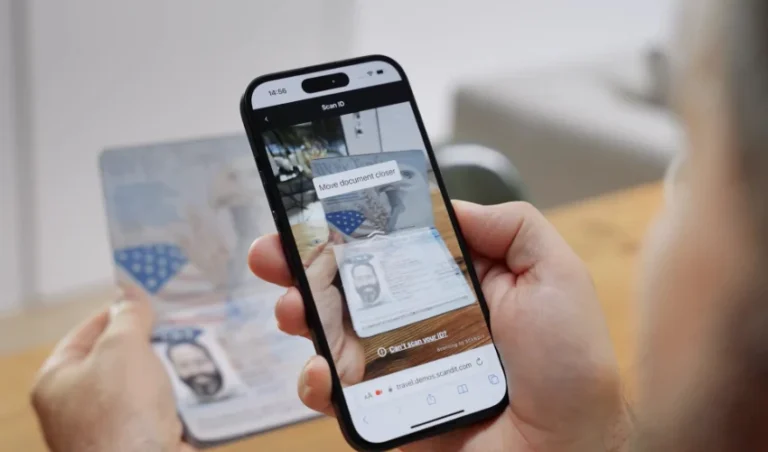Scannable IDs have gained significant attention in recent years, especially with the advancement of digital technology and increased security demands. As their use becomes more widespread across various sectors, including bars, airports, and retail establishments, misconceptions surrounding scannable IDs continue to grow. Many people are misinformed about what scannable IDs actually do, how they work, and what makes them different from regular or fake IDs. This article aims to address some of the most common myths about scannable IDs and provide factual clarity for both users and businesses.
One of the most widespread myths is that scannable IDs are always fake. This is not true. Scannable IDs can be both real and fake. A legitimate driver’s license, for example, contains a barcode or magnetic stripe that can be scanned to retrieve the individual’s information from a government database. On the other hand, fake scannable IDs are created to mimic real ones and include similar features to bypass verification checks. Not all scannable IDs are counterfeit—many are legally issued and highly secure.
Another common myth is that idzone are foolproof and cannot be duplicated. In reality, no form of identification is completely immune to forgery. While scannable IDs are harder to duplicate because of embedded security features like holograms, UV prints, and encoded data, skilled counterfeiters have become more sophisticated. This is why law enforcement agencies and businesses use advanced scanning technology and verification tools that go beyond simply scanning the barcode.
Many believe that scannable IDs only verify age. While age verification is one of the main purposes, scannable IDs do much more. For instance, they are often used in access control systems, such as secure workplaces, apartment complexes, and events, where the scanner checks for authorization levels, timestamps, or visitor records. In healthcare settings, scannable IDs are used to track patient visits and verify identities. In short, their role extends well beyond checking if someone is 18 or 21.
Some also think that if an ID scans successfully, it must be real. This is another dangerous myth. Scanning technology reads the data encoded in the barcode, but it doesn’t necessarily confirm whether the ID was legitimately issued. Fake IDs can contain valid barcode data that will still scan correctly. However, the scanner won’t flag the card as fake unless it’s cross-referenced with a government or official database. This highlights the need for businesses to use proper ID verification systems instead of relying on basic scanning.
A frequently repeated misconception is that using a scannable ID is illegal. Possessing or using a scannable ID is completely legal—if it is a valid form of government-issued identification. The illegality arises when someone uses a fake scannable ID to commit fraud, enter a restricted area, or purchase age-restricted products while underage. In such cases, the use of the ID becomes criminal. For lawful users and businesses, scannable IDs serve as a helpful tool for faster and more secure identity verification.
There is also a belief that scanning an ID stores personal information permanently. While some systems do store data temporarily, most businesses use software that complies with data privacy laws and regulations. The primary function of scanning is real-time verification, not long-term data storage. Responsible organizations ensure that sensitive information is encrypted, not shared without consent, and deleted after a certain period to maintain user privacy and comply with laws like GDPR or local data protection rules.
Another myth is that all scannable ID scanners are the same. This is not true. There are various types of scanners in the market, each with different capabilities. Some can only read barcodes, while others can detect embedded security features, access databases, or even identify tampering. Higher-end scanners offer more accurate and detailed analysis, which is why establishments that rely on strict ID verification tend to invest in advanced scanning equipment.
People also assume that fake scannable IDs are easy to spot. While some forgeries are poorly made and obvious, many high-quality fake IDs are difficult to detect with the naked eye. That’s why trained staff and modern scanning tools are essential. Relying on visual inspection alone is no longer effective, as forgers now use advanced techniques such as microprinting, laser engraving, and encoded barcodes that closely mimic real IDs.
Another common misunderstanding is that scannable IDs compromise user privacy. In reality, legitimate scanning systems are built with privacy and security in mind. While misuse can happen in rare cases, most businesses follow strict data usage policies to protect customers. Additionally, privacy settings can often be configured to limit the type and amount of data retained after scanning.
Finally, there is the belief that businesses can be sued for refusing service based on a failed ID scan. While legal issues can arise in complex cases, businesses generally have the right to refuse service if they cannot verify a customer’s age or identity. This is especially true in industries like alcohol sales, cannabis dispensaries, or aviation, where strict compliance laws apply. Using a failed or questionable scannable ID can prompt businesses to deny entry or service, and it is within their legal rights to do so.
In conclusion, scannable IDs are powerful tools for identity verification, but they are also surrounded by myths and misunderstandings. Not all scannable IDs are fake, and a successful scan doesn’t guarantee authenticity. These IDs serve purposes beyond just age verification and are legal to use when issued properly. Businesses and consumers alike should be informed about how these IDs work, what technologies are involved, and how to differentiate between real and fake. Understanding the truth behind these common myths helps promote safer transactions and smarter decisions in today’s digital age.
